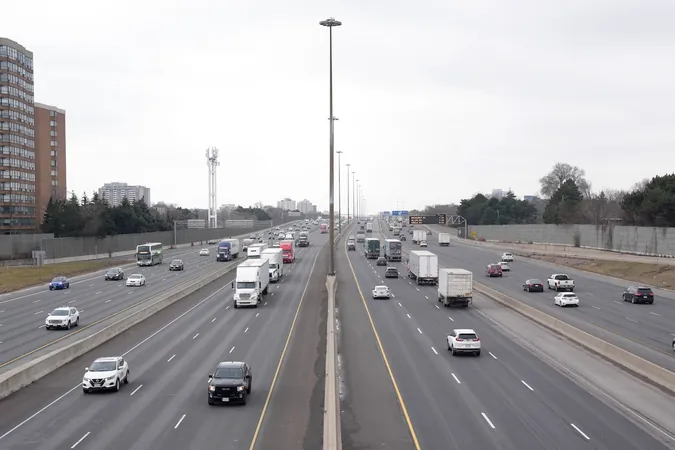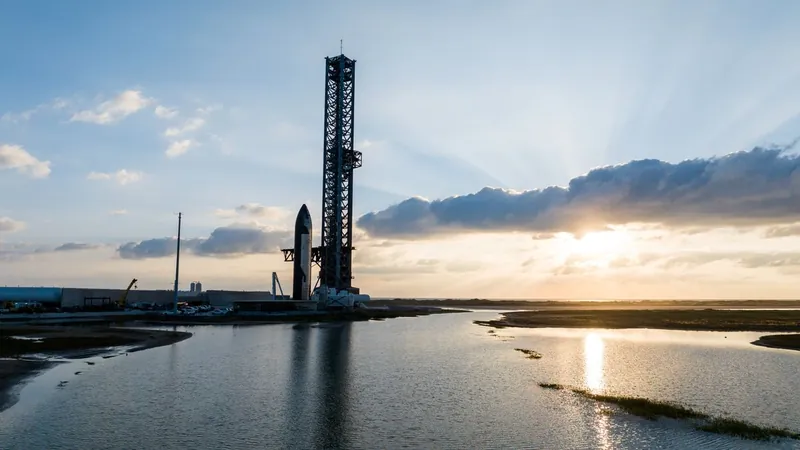
Doug Ford’s Ambitious Highway 401 Tunnel: A $60 Billion Dream that May Not Ease Traffic
2024-09-28
Author: Liam
Introduction
Ontario Premier Doug Ford has made headlines with his audacious proposal to construct the world’s longest traffic tunnel beneath the busy stretch of Highway 401, which cuts through the heart of Toronto. However, the lack of detailed information regarding the project’s budget, scope, and timeline raises eyebrows from experts who predict that this megaproject may not provide the traffic relief Ford promises.
Skepticism from Experts
Experts in tunnel engineering, such as veteran project manager Brian Garrod, have expressed skepticism. Garrod highlights that Ford’s envisioned tunnel could surpass any previous infrastructure project in Canadian history, potentially costing upwards of $60 billion to connect a 60-kilometer stretch from the west of Mississauga to Scarborough. To put this into perspective, this expenditure could consume over 60 percent of the Ontario government's projected $100 billion budget earmarked for all highway, road, and public transit initiatives over the next decade.
Cost Comparisons with Other Projects
The basis for such a staggering estimate comes from comparisons to other significant tunneling projects in North America. For example, the recently completed State Route 99 Tunnel in Seattle, measuring just 3.2 kilometers, incurred a cost of about US$3.3 billion. Garrod estimates that a longer project like Ford's would run upwards of $1 billion per kilometer—not factoring in the complexities added by the need for multiple lanes, as Highway 401 currently supports an impressive 18 lanes of traffic.
Construction Challenges
Moreover, traditional tunneling techniques would necessitate the use of highly specialized machinery, such as the record-breaking tunnel boring machine employed in Seattle, which costs over $100 million. The construction process could also require significant time. Garrod notes that even boring through 15 kilometers could take at least six years, extending the total project duration significantly with construction phases, environmental assessments, and permit negotiations.
Concerns About Traffic Relief
The fundamental concern surrounding the proposed tunnel is whether it would effectively mitigate traffic congestion—a claim that many traffic experts challenge. Research shows that expanding roadway capacity often leads to a phenomenon known as “induced demand,” where new lanes attract more motorists, quickly negating any initial benefits. As University of Toronto transportation engineering professor Baher Abdulhai succinctly puts it, this infrastructure may only perpetuate the car-centric model of urban development, raising questions about sustainability.
Critics' Perspectives
Critics like Steven Farber from the university's Mobility Network emphasize that the project lacks any tangible benefits for urban centers. Unlike many successful tunnels across the globe that also facilitate parks or public spaces above ground, Ford's proposed route risks being an exercise in futility—simply adding lanes without enhancing the quality of life for Toronto citizens.
Conclusion
As discussions move forward, it remains unclear whether Premier Ford's Highway 401 tunnel will become a reality or a cautionary tale about the complexities and challenges of modern infrastructure planning. With such a lofty price tag and mixed reviews on its potential benefits, one has to wonder: Is Ontario ready for this monumental leap into the future—or is it a tunnel to nowhere?









 Brasil (PT)
Brasil (PT)
 Canada (EN)
Canada (EN)
 Chile (ES)
Chile (ES)
 España (ES)
España (ES)
 France (FR)
France (FR)
 Hong Kong (EN)
Hong Kong (EN)
 Italia (IT)
Italia (IT)
 日本 (JA)
日本 (JA)
 Magyarország (HU)
Magyarország (HU)
 Norge (NO)
Norge (NO)
 Polska (PL)
Polska (PL)
 Schweiz (DE)
Schweiz (DE)
 Singapore (EN)
Singapore (EN)
 Sverige (SV)
Sverige (SV)
 Suomi (FI)
Suomi (FI)
 Türkiye (TR)
Türkiye (TR)